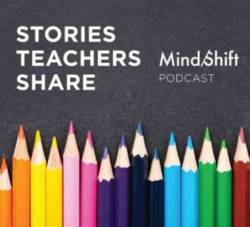This isn't about coding – it’s about how a subject such as coding (one of the most explosive fields of the past decade) reveals a scarcity mindset in our schools. This mindset is one that economists Sendhil Mullainathan and Eldar Shafir explain in their book Scarcity: Why Having Too Little Means So Much may offer some benefits in the short run, but may cause us to neglect what’s really important in the long run; namely, preparing students to learn and work in the real world.
RETHINKING A SCARCITY MINDSET
For many years, the best school leaders operated with a scarcity mindset. They demonstrated how to lead with limited resources, like teachers, textbooks and classrooms. Those who could squeeze the most out of their budgets and school spaces were deemed heroes. It was a mindset that worked well for most of the Twentieth Century.
Today, as limitations on content, space and teachers evaporate, this mindset is increasingly out of step. Leaders, instead, need to cultivate a new mindset -- one of abundance -- that leverages all the online resources available for learning.
Four beliefs can spur action and create an abundance mindset for learning:
- We can provide unlimited course sections and offerings. By sharing resources with schools and learning organizations nearby and online, we can offer more than one section of a course. We can also offer courses we hadn’t thought possible, such as all types of programming classes. For example, AP Computer Science focuses solely on Java, to the exclusion of additional programming languages valued by employers and colleges, such as HTML, CSS, JNode, to name a few. Now it’s time to rethink school schedules and course credits to support this abundance.
- We can take down the gates. With an abundance of resources, we can rethink our approach to prerequisites. We can ask when do the prereqs serve as important scaffolds for learning rather than gatekeepers for protecting scant resources. In essence, how does the concept of a prerequisite change when it no longer means exclusion but instead means actual preparation for courses anyone can access? Down come the gates.
- We can rethink course sequencing. We’re discovering that many students can master higher level concepts and skills at a younger age. For example, researchers have shown that kindergartners can master linear equations, an algebraic concept not typically taught until middle or high school. Similarly, research reveals that 5-year-olds can learn calculus concepts typically not taught until high school. Traditional course sequencing enacted in systems limited by textbooks, grade levels, and factory-like approaches to education don’t make sense when learning in the real world is abundant. This type of abundance helps us support our students in taking advantage of the 1.4 million new software engineering jobs expected between 2012 and 2022. Fortunately, colleagues are leading the way through innovative STEM programs and after school coding opportunities.
- We can make informed decisions about course and program offerings. We can access information -- employment and economic trends, higher education data, K-12 data, etc. -- more readily than ever before. Much of it has already been analyzed for us and is updated and published regularly. These trends can inform the types of programs and initiatives we provide to our students in relation to our requirements-based curriculum. We can partner with our students and families to learn where their needs and interests lie, and we can share those interests and trends in an ongoing way with school stakeholders, including teachers, students, staff, board members and parents.
Ultimately, we can develop a well-scaffolded, learner-directed school curriculum that increasingly matches real-world learning. It’s a click-through curriculum.
CREATING A CLICK-THROUGH CURRICULUM
When leaders exchange a scarcity mindset for one of abundance and innovation, they open the door to an empowering click-through curriculum.
While hard copy textbooks have been and, in many schools and districts, continue to be a learning staple, their linear organizational design is fast becoming an exception for many students. So little of our learning occurs in a textbook-like fashion. Most of it involves a very non-linear, click by click approach. We read something and realize we need to find out more about the concepts discussed, so we open a new window and search the terms we need, or we click on the link embedded in the article to gain a deeper understanding.
In essence, we’re participating in a click-through curriculum, and it’s one we need to teach our students to navigate and encourage them to pursue. There’s no scarcity there, no worries about available rooms or staffing needs. Instead, it’s about self-direction, passion, interests, persistence, critical thinking, curation, and outcomes. There’s a greater focus on what they have done and will do with what you’ve learned, rather than how they learned it.
With an abundance mindset, we can create click-through spaces in our schools and in our curriculum. We can empower students to direct their own learning and to take full advantage of the unlimited courses and access they already have outside of school. By shifting from a scarcity mindset to one of abundance, we can move from school world to real world.



